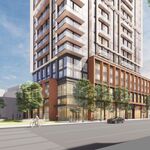Generally that's a pretty good map. There are just a couple issues that I have with it. If you're going to do that much investment, it seems crazy not to just replace the RT with a subway to Scarborough. I've also commented ad nauseam about how Mississauga City Centre would be best served by regional rail on the current GO Milton corridor, which would be diverted north along Hurontario and west along the 403 to serve MCC. Regional rail is faster and generally higher capacity than a subway or RT. As I mentioned earlier, I'd like to see the Don Mills subway run as far north as Finch. It seems logical to go the one extra station to serve a densely developed area and a large college campus. I don't really know if it's necessary to extend the DRL north of Dundas West. I can see the logic, but I think real regional rail on the rail corridor there would be just as effective. Another small point is that Weston is actually at Lawrence and not Eglinton.
You've raised some good points. In general, I feel that regional rail is great at bringing people over long distances to a single point (in this case Union). However, the problem with regional rail is that it's very difficult to get on to. If you're going soley by transit, sometimes it takes longer to get to the actual station than it does for the trip from that station to your destination station. Square One would benefit from a GO station, but mainly for commuting purposes, not for leisure trips, etc. Yes RR does have a higher capacity, but it also has much lower connectivity, and for the most part, lower frequency as well.
And the Weston stop wasn't named for the GO station, rather for the neighbourhood in general. Plus, with so many stops on the same street, it gets harder to name them (I had to change the original Lawrence West to Lawrence Heights, because otherwise it would have had to have been Lawrence Really West).
As for the Scarborough RT, I'm still trying to work through in my head the best course of action for that. Extending B-D could prove more costly than anticipated, especially if turning radi and such need to be changed. On the otherhand, downgrading it to LRT could overwhelm the system.
As for the western portion of the DRL, I personally feel that that is the most important project at the moment, especially if the current Union-Pearson plans go through. The ridership levels that the current plan are likely to produce do not justify the expense of the line, nor does it provide any increase in service to residents immediately adjacent to it. For marginally more than the cost of a commuter line, you can have a 4 track subway line.
With the Don Mills extension to Finch, I have to admit I'm not very familiar with that area, so I'll leave that up to you to determine, haha.





